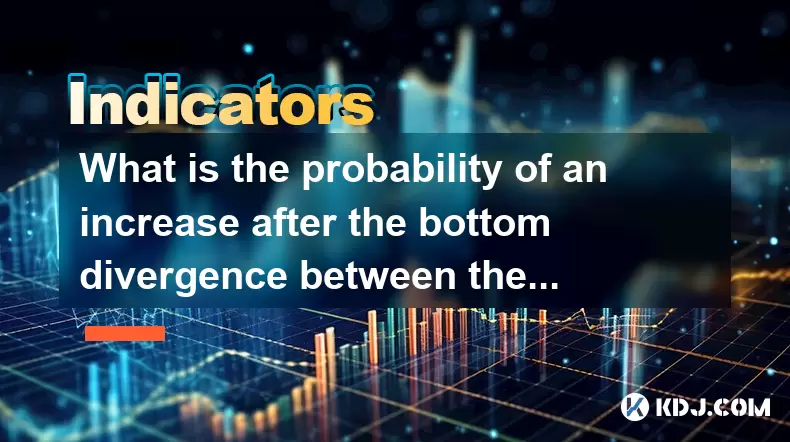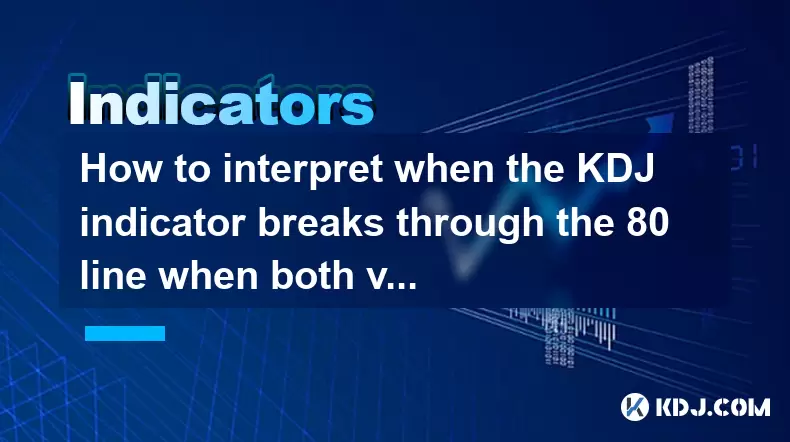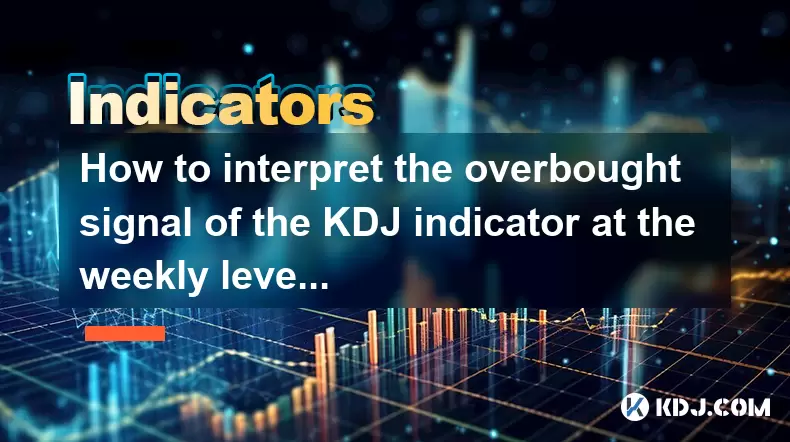-
 Bitcoin
Bitcoin $115100
-2.99% -
 Ethereum
Ethereum $3642
-1.38% -
 XRP
XRP $3.027
-5.51% -
 Tether USDt
Tether USDt $1.000
-0.05% -
 BNB
BNB $763.4
-1.32% -
 Solana
Solana $177.2
-5.42% -
 USDC
USDC $0.9999
-0.02% -
 Dogecoin
Dogecoin $0.2247
-6.47% -
 TRON
TRON $0.3135
0.23% -
 Cardano
Cardano $0.7824
-4.46% -
 Hyperliquid
Hyperliquid $42.53
-0.97% -
 Stellar
Stellar $0.4096
-6.09% -
 Sui
Sui $3.662
-2.61% -
 Chainlink
Chainlink $17.63
-3.57% -
 Bitcoin Cash
Bitcoin Cash $536.3
2.94% -
 Hedera
Hedera $0.2450
0.34% -
 Avalanche
Avalanche $23.23
-3.15% -
 Litecoin
Litecoin $112.2
-1.23% -
 UNUS SED LEO
UNUS SED LEO $8.976
-0.30% -
 Shiba Inu
Shiba Inu $0.00001341
-2.72% -
 Toncoin
Toncoin $3.101
-2.44% -
 Ethena USDe
Ethena USDe $1.001
-0.05% -
 Uniswap
Uniswap $10.08
-1.97% -
 Polkadot
Polkadot $3.938
-2.77% -
 Monero
Monero $323.9
0.87% -
 Dai
Dai $0.9999
-0.02% -
 Bitget Token
Bitget Token $4.481
-1.69% -
 Pepe
Pepe $0.00001199
-5.94% -
 Aave
Aave $288.2
-0.68% -
 Cronos
Cronos $0.1279
0.36%
How to operate when the monthly MACD column line shortens + weekly Yin line increases in volume + daily line falls below the 10-day line?
A shortening monthly MACD, weekly bearish candle with high volume, and daily close below the 10-day MA signal weakening momentum and potential trend reversal.
Jul 24, 2025 at 08:36 pm

Understanding the Monthly MACD Column Line Shortening
When the monthly MACD column line shortens, it signals a potential slowdown in bullish momentum. The MACD (Moving Average Convergence Divergence) histogram represents the difference between the MACD line and the signal line. A shrinking histogram indicates that the gap between these two lines is narrowing, which often precedes a trend reversal or consolidation phase. In a monthly timeframe, this shift carries significant weight because it reflects long-term momentum changes.
Traders should pay close attention when the monthly MACD histogram bars begin to reduce in height after a sustained uptrend. This could suggest that the upward momentum is weakening, even if the price remains elevated. It does not automatically mean a sell signal, but it does call for caution. Confirming this signal with volume and price action on lower timeframes is essential to avoid premature decisions.
To monitor this, set up your charting platform to display the MACD indicator with the histogram. Ensure the timeframe is set to "Monthly." Observe the last three to five bars of the histogram. If each subsequent bar is shorter than the previous one, the condition is met. This visual cue is critical and should not be ignored, especially when combined with other bearish signals on weekly and daily charts.
Interpreting the Weekly Yin Line with Increasing Volume
A Yin line (bearish candle) on the weekly chart that appears with increasing volume strengthens the bearish implication. In candlestick terminology, a Yin line refers to a red or black candle where the closing price is lower than the opening price. When such a candle forms on the weekly chart and is accompanied by higher-than-average trading volume, it suggests strong selling pressure at a critical juncture.
Volume plays a pivotal role in validating price movements. A Yin line with rising volume indicates that more participants are actively selling, which increases the reliability of the bearish signal. This is particularly concerning if it occurs after a prolonged uptrend or near a key resistance level.
To analyze this, switch your chart to the weekly timeframe and locate the most recent completed candle. Confirm it is a bearish (Yin) candle. Then, check the volume indicator below the chart. Compare the volume of the current week to the average volume of the previous four weeks. If the current volume is significantly higher, the bearish signal gains strength. This condition, when aligned with a shortening monthly MACD histogram, raises the probability of a trend shift.
Daily Price Action: Closing Below the 10-Day Moving Average
On the daily chart, a close below the 10-day moving average (MA) is a short-term bearish development. The 10-day MA acts as a dynamic support level in uptrends. When price breaks and closes beneath it, especially after testing it multiple times, it may indicate weakening short-term momentum.
To verify this, set your chart to the daily timeframe and apply the 10-day simple moving average. Wait for the daily candle to close. If the closing price is below the 10-day MA line, the condition is triggered. This becomes more significant if the candle is bearish and shows strong downward momentum.
This signal is not isolated. When it coincides with the monthly MACD shortening and the weekly Yin volume surge, it forms a multi-timeframe bearish alignment. Traders should avoid entering new long positions under this configuration. Instead, consider reducing exposure or preparing for a potential short setup.
Step-by-Step Operational Strategy
When all three conditions are met, the following operational steps should be executed:
- Verify all three signals independently on their respective timeframes: monthly MACD histogram shortening, weekly Yin candle with rising volume, and daily close below the 10-day MA.
- Check for confluence with key support/resistance levels. If the price is approaching a major support zone, the bearish signals may lead to a bounce, so context matters.
- Avoid opening new long positions. The alignment suggests diminishing bullish strength across timeframes.
- Consider partial profit-taking if holding long positions, especially if entry was based on momentum now showing signs of reversal.
- Place stop-loss orders above recent swing highs to protect against false breakdowns.
- Monitor for a retest of the 10-day MA from below. If price fails to reclaim it, the bearish case strengthens.
- Watch for a bearish crossover in the daily MACD as a potential confirmation for short entries.
Each step must be followed in sequence without skipping verification. Skipping any condition increases the risk of misreading the market structure.
Risk Management and Position Adjustment
In this scenario, risk management becomes the top priority. Even with strong multi-timeframe signals, cryptocurrency markets are volatile and prone to sharp reversals. Never risk more than a predetermined percentage of your portfolio on a single trade.
If you are currently long, reduce position size by 30% to 50% to lock in profits and lower exposure. This adjustment helps preserve capital while allowing room to reassess. Use limit orders to exit portions of your position at specific price levels to avoid slippage.
For those considering short positions, wait for confirmation. A breakdown below the daily low of the bearish candle, accompanied by rising volume, can serve as an entry trigger. Enter with a tight stop-loss just above the recent consolidation high.
Always use trailing stops if the market continues to move against the prior trend. This protects gains while allowing room for the trade to develop.
Monitoring Exit and Reversal Signals
After adjusting your position, continuous monitoring is required. Look for signs that the downtrend is losing momentum. These include a daily close back above the 10-day MA, a weekly Yang (bullish) candle with strong volume, or a resumption of growth in the monthly MACD histogram.
If any of these reversal signals appear, reassess your stance. A single bullish candle is not enough, but a cluster of confirming events may indicate the bearish phase is ending. Until then, maintain a defensive posture.
Use alerts on your trading platform to notify you when price interacts with key levels or when volume spikes. Automation helps ensure you don’t miss critical developments, especially in 24/7 crypto markets.
Frequently Asked Questions
What if the daily price closes below the 10-day MA but quickly recovers the next day?
A single close below the 10-day MA is a warning, but if the next day’s candle closes back above it with strong volume, the signal may be invalidated. This is called a false breakdown. Monitor for follow-through. Without sustained closes below the MA, the bearish implication weakens.
Can I use exponential moving averages instead of simple ones?
Yes, the 10-day EMA can be used instead of the SMA. The EMA reacts faster to price changes, which may generate earlier signals. However, it also increases the chance of false signals. Test both on historical data to see which aligns better with your strategy.
How do I confirm volume is increasing on the weekly chart?
Compare the volume of the current weekly candle to the average volume of the prior four weeks. If it is at least 25% higher, it qualifies as increasing volume. Use a volume moving average (e.g., 4-week MA of volume) as a benchmark.
Should I act immediately when the monthly MACD starts shortening?
No. Wait for confirmation from lower timeframes. The monthly signal is a warning, not a trigger. Only act when weekly and daily conditions align. Premature action based on monthly data alone can lead to losses during normal pullbacks.
Disclaimer:info@kdj.com
The information provided is not trading advice. kdj.com does not assume any responsibility for any investments made based on the information provided in this article. Cryptocurrencies are highly volatile and it is highly recommended that you invest with caution after thorough research!
If you believe that the content used on this website infringes your copyright, please contact us immediately (info@kdj.com) and we will delete it promptly.
- Kaspa's Strongest Month REVEALED: New Data Shocks KAS Traders!
- 2025-07-26 04:30:12
- Crypto Losses: From ZIRP to Zero - How I Lost a Million Dollars (and What You Can Learn)
- 2025-07-26 04:30:12
- BONK's Wild Ride: Selling Pressure and Market Dip - A New Yorker's Take
- 2025-07-26 03:30:12
- Pepeto Presale Heats Up: Demo Trading and Meme Coin Mania!
- 2025-07-26 02:50:11
- WeWake, Nexchain AI, and the Crypto Presale Frenzy: What You Need to Know
- 2025-07-26 02:50:11
- Scottie Pippen's XRP Moonshot: A Slam Dunk or an Air Ball?
- 2025-07-26 03:30:12
Related knowledge

What does it mean when the price breaks through the 30-day moving average and is accompanied by a large volume?
Jul 26,2025 at 03:35am
Understanding the 30-Day Moving Average in Cryptocurrency TradingThe 30-day moving average (MA) is a widely used technical indicator in the cryptocurr...

What does it mean when the MACD bar turns from negative to positive?
Jul 26,2025 at 05:01am
Understanding the MACD Indicator in Cryptocurrency TradingThe Moving Average Convergence Divergence (MACD) is a widely used technical analysis tool in...

Does the golden cross of the KDJ three lines at the annual line level indicate a turning point in the big cycle?
Jul 26,2025 at 01:35am
Understanding the KDJ Indicator in Cryptocurrency TradingThe KDJ indicator is a momentum oscillator widely used in technical analysis, especially with...

What is the probability of an increase after the bottom divergence between the KDJ indicator and the trading volume?
Jul 26,2025 at 01:29am
Understanding KDJ Indicator and Its Role in Technical AnalysisThe KDJ indicator is a momentum oscillator widely used in cryptocurrency trading to iden...

How to interpret when the KDJ indicator breaks through the 80 line when both volume and price rise?
Jul 26,2025 at 12:47am
Understanding the KDJ Indicator and Its ComponentsThe KDJ indicator is a momentum oscillator widely used in technical analysis within the cryptocurren...

How to interpret the overbought signal of the KDJ indicator at the weekly level?
Jul 26,2025 at 04:09am
Understanding the KDJ Indicator at the Weekly LevelThe KDJ indicator is a momentum oscillator widely used in technical analysis to identify potential ...

What does it mean when the price breaks through the 30-day moving average and is accompanied by a large volume?
Jul 26,2025 at 03:35am
Understanding the 30-Day Moving Average in Cryptocurrency TradingThe 30-day moving average (MA) is a widely used technical indicator in the cryptocurr...

What does it mean when the MACD bar turns from negative to positive?
Jul 26,2025 at 05:01am
Understanding the MACD Indicator in Cryptocurrency TradingThe Moving Average Convergence Divergence (MACD) is a widely used technical analysis tool in...

Does the golden cross of the KDJ three lines at the annual line level indicate a turning point in the big cycle?
Jul 26,2025 at 01:35am
Understanding the KDJ Indicator in Cryptocurrency TradingThe KDJ indicator is a momentum oscillator widely used in technical analysis, especially with...

What is the probability of an increase after the bottom divergence between the KDJ indicator and the trading volume?
Jul 26,2025 at 01:29am
Understanding KDJ Indicator and Its Role in Technical AnalysisThe KDJ indicator is a momentum oscillator widely used in cryptocurrency trading to iden...

How to interpret when the KDJ indicator breaks through the 80 line when both volume and price rise?
Jul 26,2025 at 12:47am
Understanding the KDJ Indicator and Its ComponentsThe KDJ indicator is a momentum oscillator widely used in technical analysis within the cryptocurren...

How to interpret the overbought signal of the KDJ indicator at the weekly level?
Jul 26,2025 at 04:09am
Understanding the KDJ Indicator at the Weekly LevelThe KDJ indicator is a momentum oscillator widely used in technical analysis to identify potential ...
See all articles

























































































